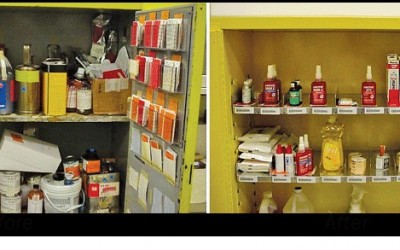How to succeed in Lean where others struggle?
There are never any Harry Potter magic wands around when you need them! To ensure that things miraculously improve. When you want to make things better in a lasting and self-sustaining way it is important to get a few good old-fashioned Muggle cards up your sleeves. So how to succeed in Lean?
Select a meaningful area. One that will make a noticeable difference, perhaps an area that everyone walks past quite often, or has a reputation for being problematic. Ideally, one that will make a good financial improvement, but this is less important than getting noticed by people. To be sustaining people will want to come and take part. To be part of the change they have seen. To share the success. This Culture change only happens if it is obvious in some way. Target either visually impactful changes, that get people talking, or make a lot of noise about the results being achieved.
This is where the simple power of before and after pictures can be great:
Most of all choose carefully one that you are confident will succeed relatively quickly.
There are some important clues to look for here:
If an area was reported as good previously and now isn’t, very often it can be turned around by engaging and listening to the team about what has changed. What used to work well can still work well, perhaps with some small changes.
Look for measured results that can quickly move from high to low than back up to a high level again – this could be on any OEE measure. A high level of variability suggests that understanding what makes it collapse through some structured problem solving can quickly improve the outcomes, and extend the time of operating at higher levels.
Should you enrol on the Hogwarts Powers of Telepathy course or simply use good facilitation?
It is important at this early stage to figure out what needs to happen, but not jump straight to imposing a quick fix solution. To be sustainable the people on the ground need to come up with the ideas. They need to be empowered to make small changes to improve. They need to learn how to measure the before and after so that they can demonstrate success / or importantly reject the idea if it makes no change. The culture change needs to be gradual and unforced.
It is by careful questioning and coaxing of the people involved to arrive at the right areas to make a difference; good facilitation weaves a powerful spell so that they truly believe they thought of it themselves.
Look to the future…… always start with a baseline measurement of some key parameter that is meaningful. A long-term measure that over time (ideally many months and years) you will tend to show progress. The team will be proud of this chart of incontrovertible evidence displayed in their working area that they are contributing to the success of the enterprise. Mark on the trend where the slope changes due to improvement projects that you have made so that a narrative of development can take place, illustrating that what you have done leads to future success. It reinforces the learning.
Will it always trend in a positive direction? Life isn’t like that. Don’t be surprised if it takes a few dives and dips. Spend time in understanding with the team what caused these and you will have your next areas for detailed problem solving, analysis, trials and reliability improvement.
Share:



